(Formerly The Somerset Medical Center) - Part 2
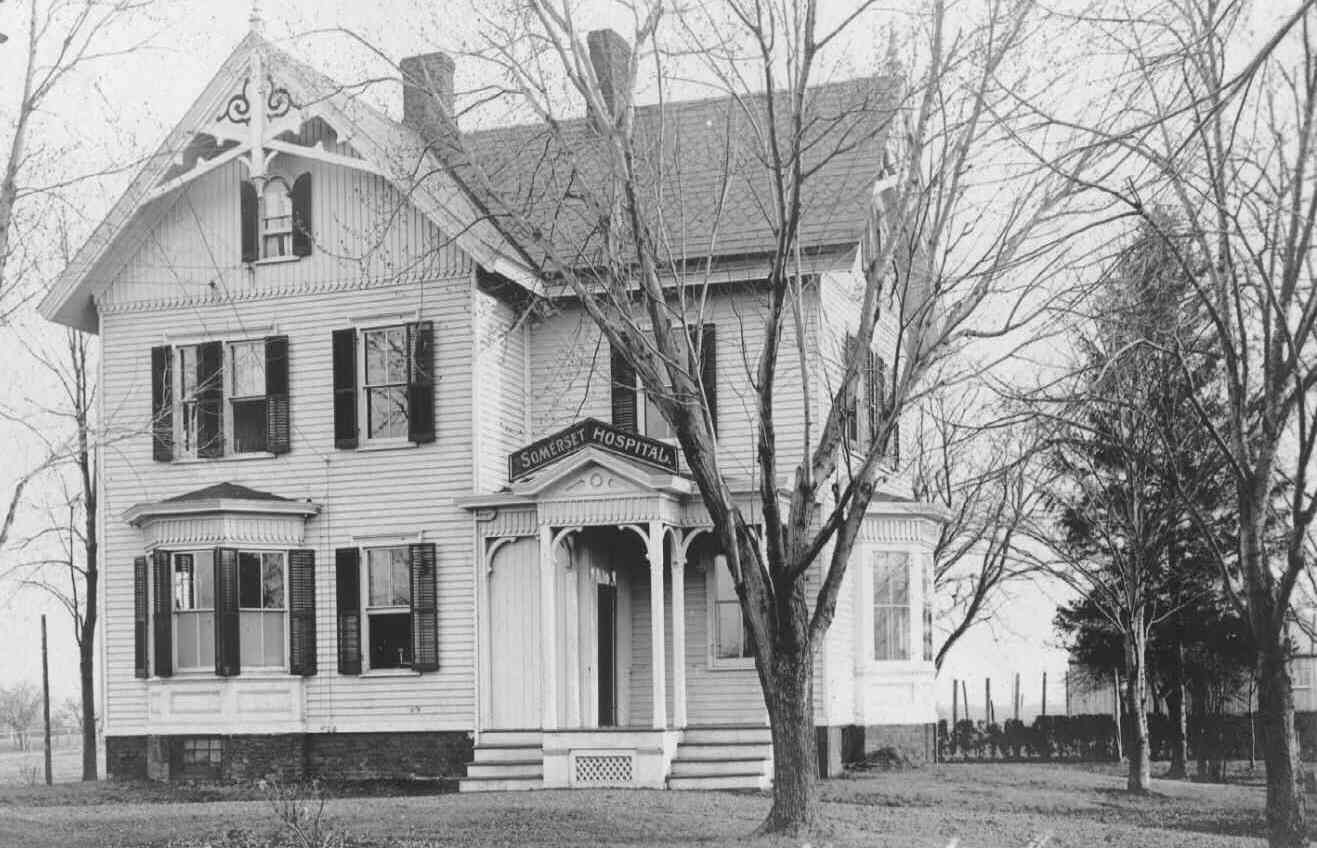
That home had been known as “The Lord Mansion” as it had been owned by John Lord who was a prominent local banker who had just passed away. It was a seven room house with a third floor walk-up attic.
When the house was first purchased it did not even have electricity or water. The electrical lines and water pipes had been along the street for over a decade, but they were mostly for industry so they bypassed the homes.
Soon after the home was designated a hospital they would be hooked up to the utilities. To get the soon-to-be hospital ready they quickly went to work - hardware floors were put down, a patient ward was set up, as was a children’s room, and an operating room was put together.
Click for large view

In the first months it was mostly an emergency care facility staffed with a matron who would call a doctor in case an accident victim was brought to the hospital. In a couple months the hospital would become fully functional (for its era).

- Monetary donations were always coming in.
- Many business people donated their services such as plumbing, electrical work, carpentry, and landscaping. Some businesses gave their products to the hospital for free. For example, the “Gallagher Brother’s Ice Supply” of Raritan provided free ice. Local milkmen made it a regular stop, but did not charge.
- Many appliances and some furniture were donated: a kitchen oven, a heating stove, beds, chairs, tables, and lamps, etc … . Most things were used, but it was an era of scarcity and the hospital lacked funding so all things were welcome. A local sign maker made and donated a sign that simply said “Somerset Hospital”. Even small things such as groceries, towels, sheets, blankets, and books – including bibles were donated. Many bottles of wine were donated. Hopefully they were for the staff, when off duty.
- To aid in the ongoing need for funds a “second hand” store was set up in Somerville. The public would donate any items that they did not need for the store to sell. The owner of the building helped the cause as he did not charge any rent. A Woman’s Auxiliary Board of volunteers oversaw the operation of this store.
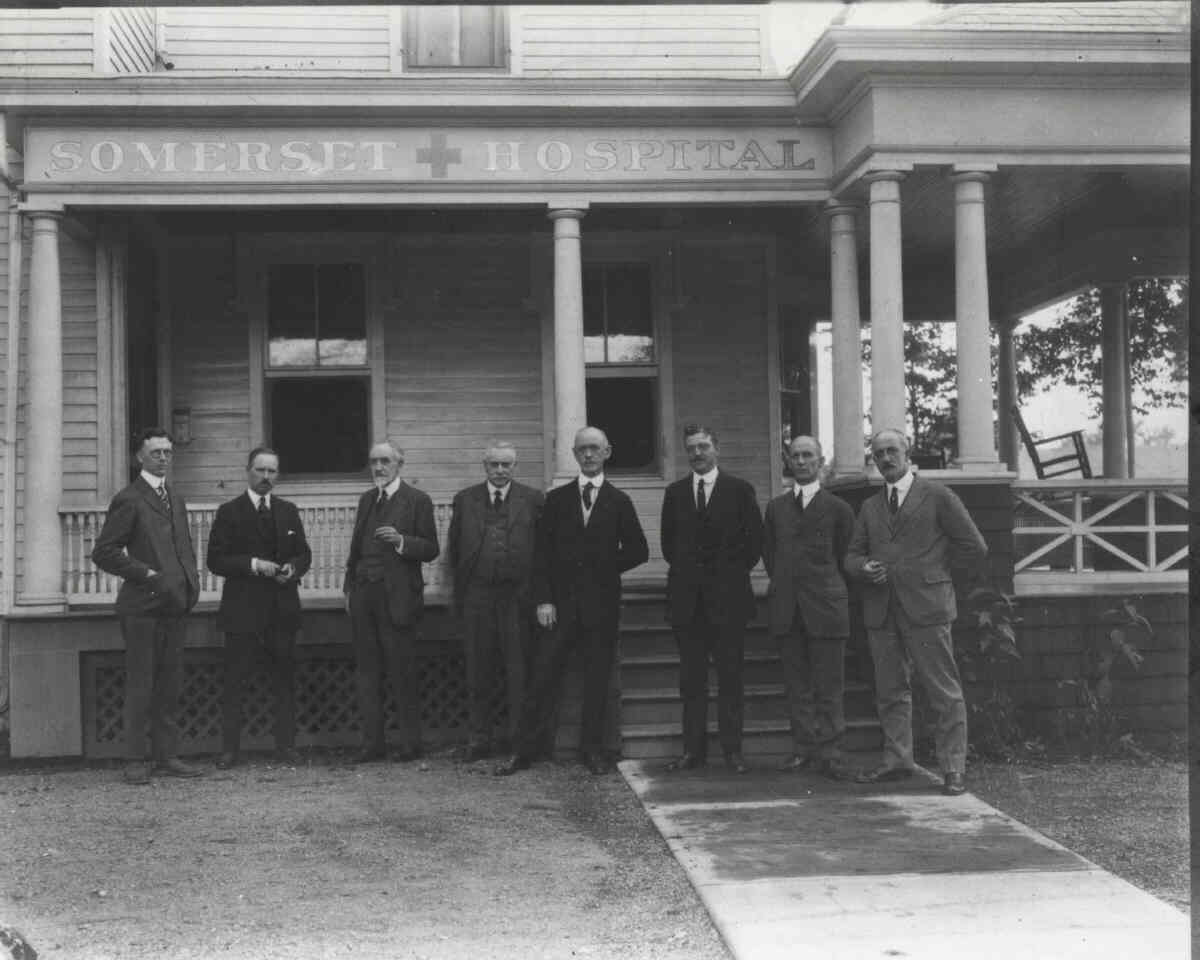
The new hospital would encounter many challenges. In April of 1901 the President of the Medical Staff Doctor H.G. Wagoner unexpectedly passed away. Some good came of this as all of Dr. Wagoner’s surgical instruments, supplies, operating table, and vast library of medical books were donated to the hospital by his family.
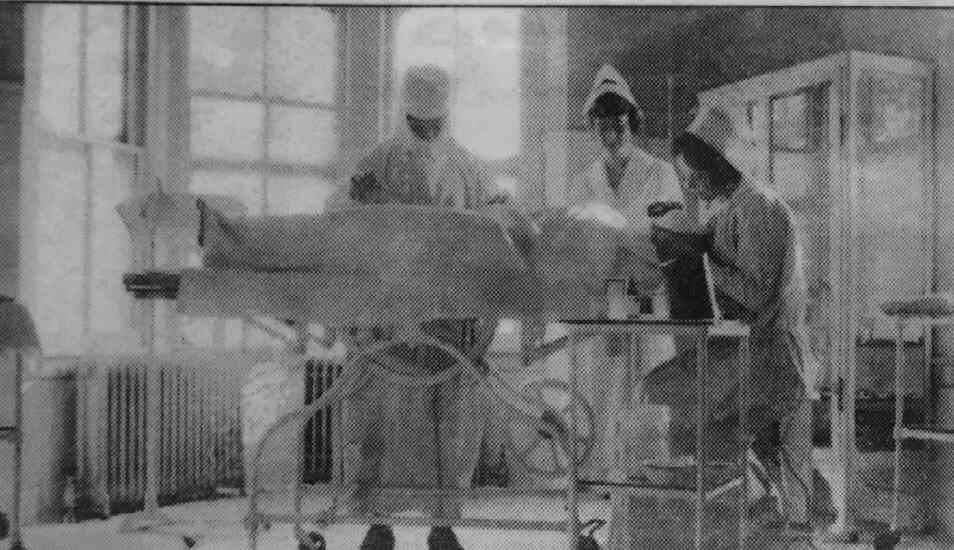
The nurses ran the hospital – and they ran it quite well. An editorial in the local newspaper “The Somerset Democrat” paid tribute to them printing “The ladies have shown excellent judgment in running the hospital … they have proven themselves … and are entitled to the thanks of the whole county for their unselfish work.”
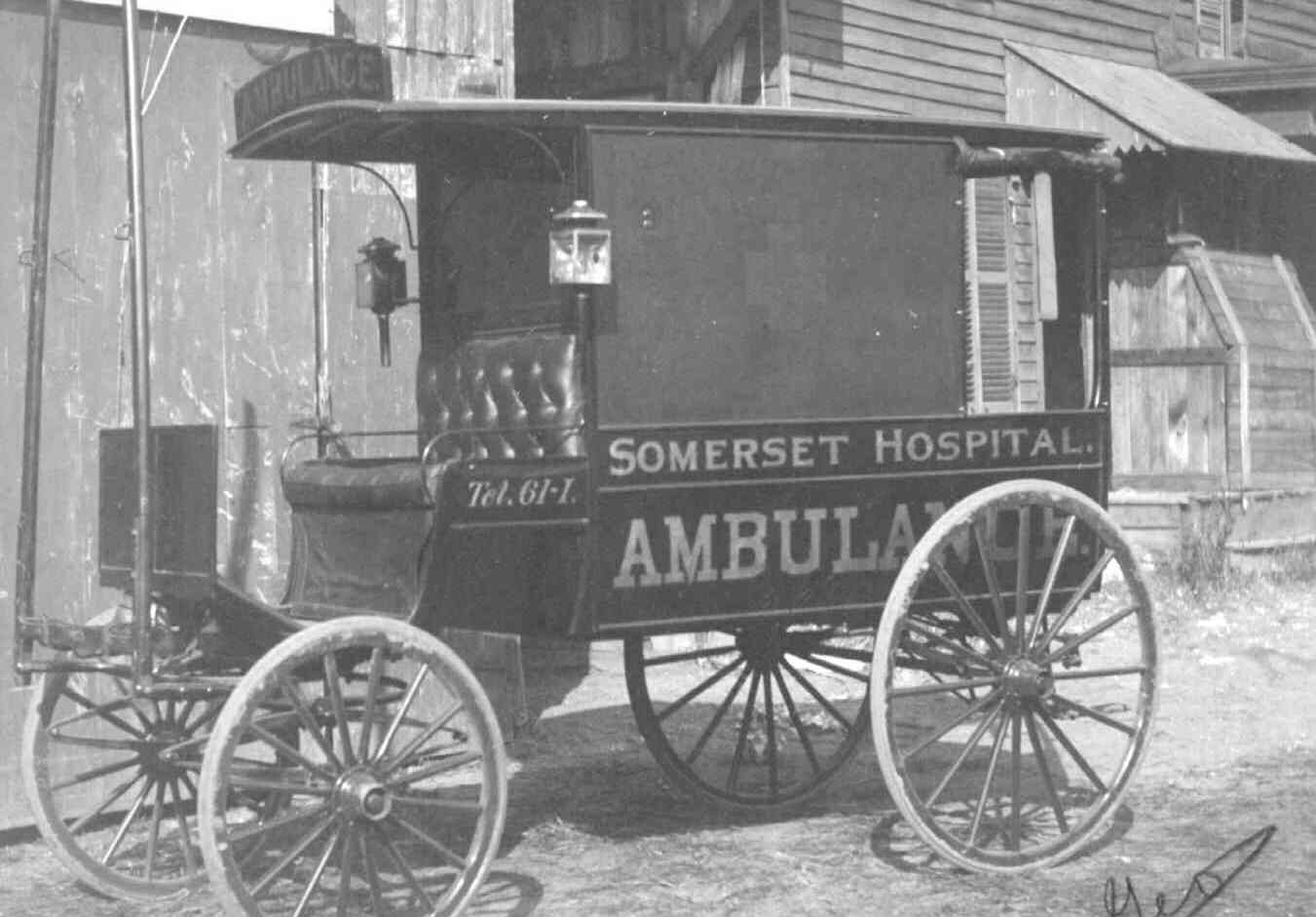
Unlike today it was not automobile accidents, but railroad and trolley accidents as well as horse riding mishaps that caused most of the injuries back then.

The number of patients increased each year, thus space in the hospital was always an issue.
In 1908, a large addition that more than doubled the size of the hospital was added. This would increase the capacity to 32 beds.
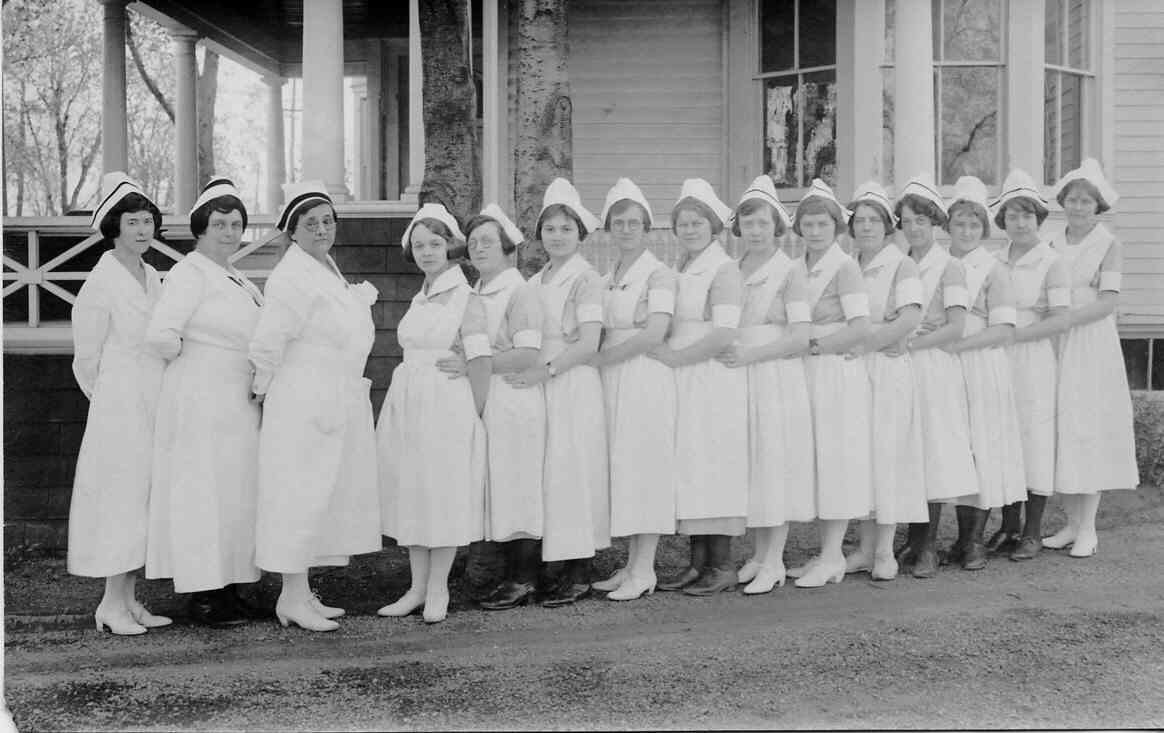
The nurses would receive some classroom training, but mostly they learned while working with a regular nurse. The nurse’s duties were wide ranging. They gave medical care to the patients and also did everything else such as cooking and cleaning to keep the hospital running.
Historians have commented on this “barter” arrangement and today’s conclusion is that this deal was stacked in favor of the hospital, but it did provide a rare opportunity for women of that era to obtain a degree.
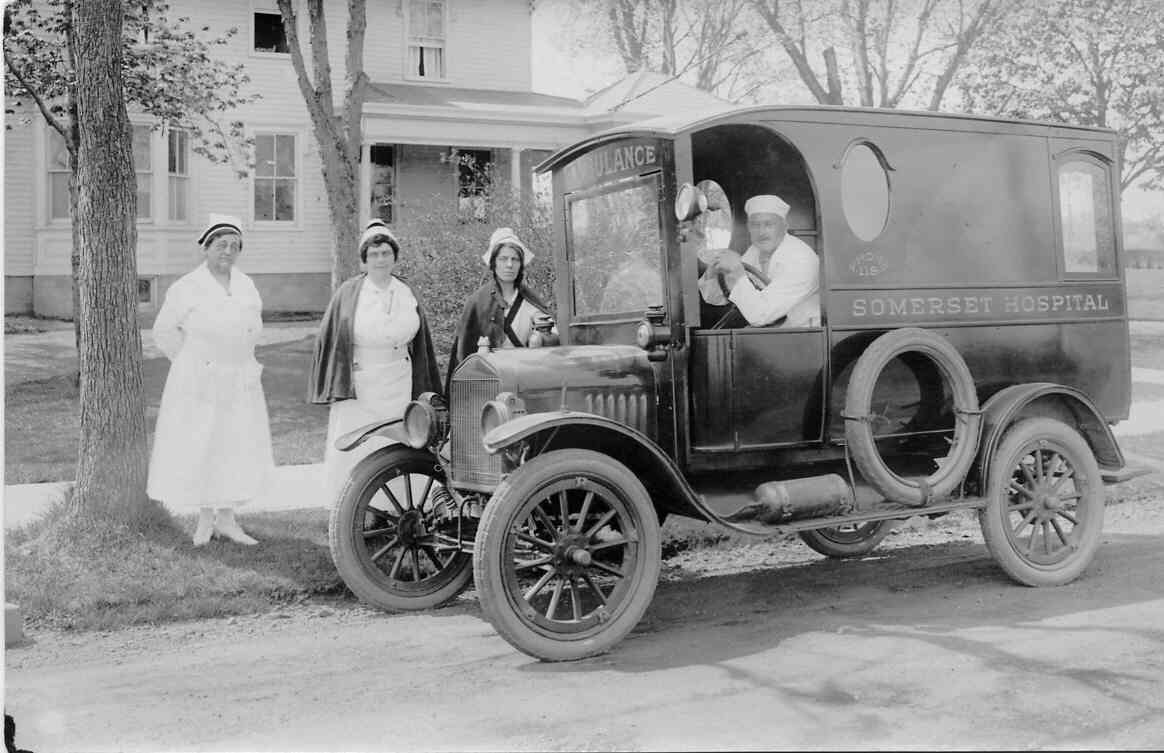
In 1918 an X-Ray machine was purchased and a special room was setup for its use.
By 1923 the hospital had again outgrown its size – it had seen 1100 patients that year. It was decided that rather than expand the existing house it was better to build a new modern hospital on a new site. So a nine acre lot was purchased across the street on Rehill Avenue for the building of a new modern hospital.
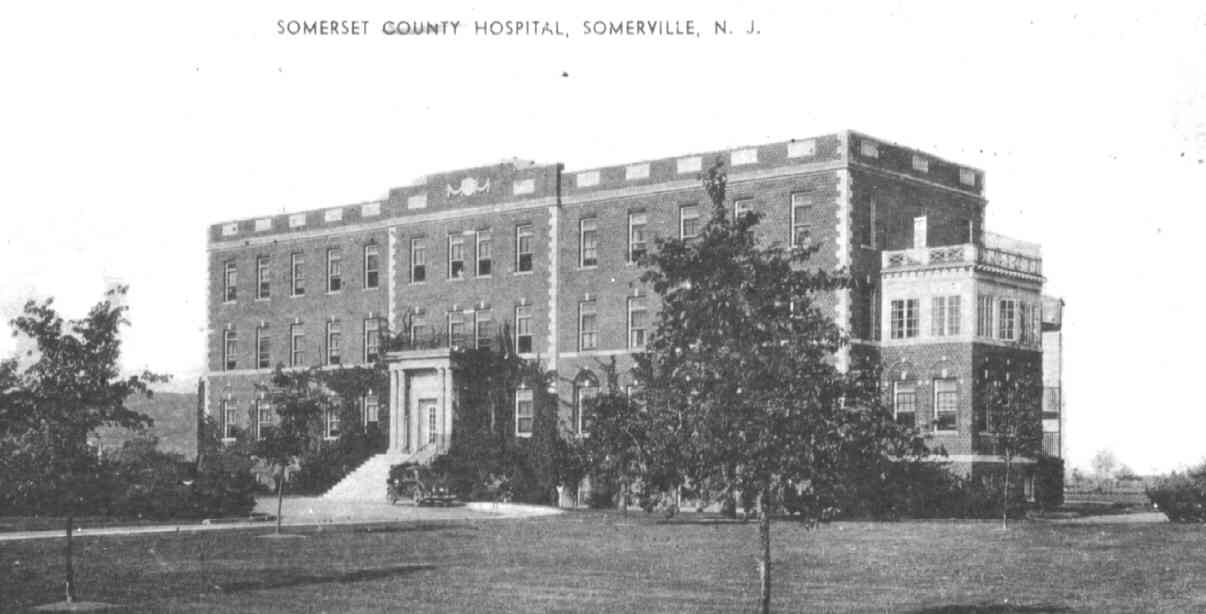
Special thanks to Judy Godrey for the tour of the original hospital on East Main Street.
Special thanks to Jimmy Sommerville for the photos of the original hospital.
Next issue of The Breeze will be part 3 of the History of the hospital.
on Rehill Avenue opened in 1925